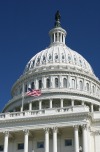Impact of the U.S shutdown
The partial shutdown of the US government ended a day before the debt ceiling deadline with a cross-party deal agreed between Republican and Democratic senators. A major part of this deal extends the US debt limit to the 7th of February 2014, with government funding guaranteed until the 15th of January.
By striking this deal at a crucial time the Senate has avoided national default, but how will this affect investment in the country in the future?
There have already been concerns over the US losing its top Aaa credit rating this year and investment in the US treasuries may be reduced.
Fund management corporation BlackRock publish the Sovereign Risk Index which measures a country’s financial situation with regard to movement, and their repayment compliance. In 2013 the US has been ranked in the second tier with South Korea and Peru, under Singapore and Australia in the top tier. Below the US stands the UK, alongside the Philippines and Thailand in the third tier.
During the shutdown the credibility of the US dollar also came under scrutiny, with China calling for it to be extracted as the world’s only reserve currency. The problem lies with choosing a currency strong enough to take its place at the centre of the global financial structure and as yet the dollar looks set to stay.
In addition to the extension of the US debt limit, the Senate Bill to reopen the government included an increased budget for a Western Kentucky dam project to $2.9 billion, and $450 million of financial aid to help rebuild roads in Colorado after severe flooding.



